- Home
- /
- Healthy Meal
- /
- Healthy meal today
- /
- The Pyramid of Healthy...
- /
- The Pyramid of Healthy...
- 1. The History and Evolution of Healthy Eating Pyramid
- 2. The Foundation – Whole Grains and Complex Carbohydrates
- 3. The Spectrum of Color – Fruits and Vegetables
- 4. Building Blocks – Lean Proteins and Legumes
- 5. The Crown – Fats and Oils in Balance
- 6. The Pyramid in Practice – Meal Planning and Portion Control
- 7. The Pyramid’s Flexibility – Customizing for Individual Needs
- 8. The Future of Nutrition – Evolving with Science and Society
In an age where the abundance of information on diets and nutrition can feel overwhelming, the Pyramid of Healthy Eating emerges as a timeless and practical blueprint for fostering well-being through food. This comprehensive guide explores the origins, principles, and practical applications of the Pyramid, shedding light on how it can serve as a steadfast companion on your journey to optimal health.
In the world of nutrition and diet, finding a path to optimal health can often feel like navigating an intricate maze. However, at the heart of this culinary labyrinth lies a guiding light—the Healthy Eating Pyramid. In an era when fad diets and conflicting nutritional advice abound, this timeless and science-backed framework serves as a beacon, illuminating the way to a balanced, nourished life.
Join us on a journey as we delve deep into the layers of this iconic pyramid, unlocking the secrets to a healthier and more fulfilling relationship with food. From the robust foundation of whole grains to the crown of heart-healthy fats, we’ll explore each tier, offering practical insights and delicious inspiration to help you scale the heights of wellness. Welcome to the world of the Healthy Eating Pyramid, where nourishment meets knowledge, and every bite is a step toward a healthier you.
1. The History and Evolution of Healthy Eating Pyramid
The story of the Pyramid of Healthy Eating begins with a journey through the history of dietary guidance. From the early civilizations of Egypt and Greece to the emergence of modern nutritional science, we trace the evolution of our understanding of nutrition and how it culminated in the iconic Pyramid we know today.
In the vast tapestry of human history, the Pyramid of Healthy Eating emerges as a prominent thread—a timeless symbol of wisdom in the realm of nutrition. To truly appreciate its significance, we must embark on a journey through time, tracing the evolution of dietary guidance from the distant past to the present day.
1.1. Ancient Wisdom: The Roots of Nourishment
Our exploration begins in the cradle of civilization itself, where ancient cultures laid the foundational stones of dietary wisdom. In the land of the pharaohs, Egypt, we encounter some of the earliest documented dietary guidelines. Hieroglyphs etched on temple walls reveal the importance of a balanced diet, emphasizing the consumption of grains, vegetables, and fruits.
Meanwhile, in ancient Greece, philosophers such as Hippocrates pondered the profound connection between food and health. They believed that food could serve as both medicine and poison, laying the groundwork for a holistic understanding of nourishment.
1.2. The Middle Ages: A Culinary Alchemy
As we traverse the Middle Ages, we encounter a fascinating fusion of culinary traditions. The medieval kitchen was a cauldron of innovation, blending the exotic spices of the East with the hearty staples of the West. It was during this era that the concept of balance in food gained prominence, with the idea of temperance as a virtue extending to the dinner table.
1.3. The Renaissance: The Age of Experimentation
The Renaissance ushered in a period of culinary experimentation and exploration. Royal courts and scholars avidly pursued the art of gastronomy, laying the groundwork for a refined and nuanced understanding of food. The likes of Leonardo da Vinci explored the intricate connection between diet and health, further illuminating the path toward balanced nourishment.
1.4. The Birth of Modern Nutrition Science
The 19th and 20th centuries witnessed a dramatic transformation in our understanding of nutrition. Scientific advancements, such as the discovery of essential nutrients like vitamins and minerals, reshaped our perception of food’s role in health. This period also saw the emergence of dietary guidelines and the first inklings of the iconic Pyramid.
1.5. The Pyramid Takes Shape: The 20th Century
The Pyramid of Healthy Eating, as we know it today, began to take shape in the mid-20th century. Dr. Walter Willett, a renowned epidemiologist, and nutritionist, played a pivotal role in its evolution. His research on the health effects of dietary patterns laid the groundwork for a more structured and practical approach to nutrition guidance.
In 1974, the concept of the Food Guide Pyramid was introduced by the U.S. Department of Agriculture (USDA), aiming to educate the public about a balanced diet. This early iteration, though valuable, was still in its infancy.
1.6. The Modern Pyramid: A Timeless Blueprint
The turning point came in 1992 when the USDA unveiled the iconic Food Pyramid that most of us recognize today. It represented a significant departure from its predecessors, presenting a visual hierarchy of food groups and emphasizing the importance of grains, fruits, vegetables, protein, and dairy. This iteration served as a simple and accessible guide for individuals seeking to improve their dietary choices.
1.7. Challenges and Critiques: Adapting to New Realities
While the Pyramid of Healthy Eating has stood the test of time, it has not been without challenges and critiques. Critics argue that it oversimplified nutrition, failed to address individual dietary needs, and did not adequately address the rise of processed and convenience foods in modern diets. In response, subsequent versions of the Pyramid have aimed to address these concerns and promote a more nuanced understanding of nutrition.
Conclusion: A Tapestry of Tradition and Innovation
The history and evolution of the Pyramid of Healthy Eating is a testament to the human quest for nourishment, health, and well-being. It draws on the wisdom of ancient civilizations, the culinary alchemy of the Middle Ages, the experimentation of the Renaissance, and the precision of modern nutrition science. As we continue our journey through this guide, we will explore how this ancient wisdom meets the challenges of our modern world, adapting to the ever-evolving landscape of nutrition and dietary guidance.
2. The Foundation – Whole Grains and Complex Carbohydrates
At the very base of the Pyramid lies a fundamental truth – the significance of whole grains and complex carbohydrates. We delve into the world of grains, exploring their rich nutritional profile, the benefits of fiber, and how they provide sustained energy and support digestive health. This chapter also offers practical tips on incorporating whole grains into your daily meals.
In our exploration of the Pyramid of Healthy Eating, we descend into the sturdy embrace of its foundational layer—whole grains and complex carbohydrates. This is where the journey toward nourishment and vitality truly begins, as we uncover the ancient wisdom and modern science that underpin the importance of these humble yet powerful staples in our diet.
2.1. Nutritional Powerhouses: The Anatomy of Whole Grains
To truly appreciate the value of whole grains, we must dissect their nutritional profile. Whole grains are nature’s treasure trove of nutrients, containing a rich blend of fiber, vitamins, minerals, and antioxidants.
The composition of whole grains, with their rich blend of dietary fiber, vitamins, minerals, and antioxidants, forms a symphony of benefits for our health. Their high fiber content, consisting of both soluble and insoluble fibers, acts as a digestive guardian. Soluble fibers slow down digestion, promoting a steady release of energy into the bloodstream, which helps in maintaining sustained energy levels throughout the day.
On the other hand, insoluble fibers add bulk to the stool, facilitating regular and healthy bowel movements, thus contributing to improved digestion. Moreover, the plethora of nutrients and antioxidants present in whole grains serves as a protective shield against chronic diseases. These compounds combat oxidative stress, inflammation, and other risk factors associated with conditions like heart disease, diabetes, and certain cancers, making whole grains a formidable ally in the quest for long-term health and vitality.
2.2. Fiber: The Digestive Guardian
At the heart of whole grains lies fiber—a dietary superhero. Fiber, the unsung hero of our diets, is a transformative force in our digestive health, making it a vital cornerstone of a balanced diet. It acts as a gentle yet powerful broom within our digestive system, promoting regularity and preventing constipation by adding bulk and softness to our stool. This not only fosters physical comfort but also reduces the risk of gastrointestinal disorders.
Beyond this, fiber serves as a prebiotic, nourishing the beneficial bacteria in our gut, which, in turn, bolsters our immune system and aids in the efficient absorption of nutrients. Furthermore, it plays a pivotal role in stabilizing blood sugar levels, preventing the rapid spikes and crashes that can result from consuming highly processed foods. In sum, fiber is the unsung architect of digestive harmony, and its inclusion in a balanced diet is fundamental to our overall well-being.
2.3. The Energy Elixir: Carbohydrates Unveiled
The art of balancing carbohydrates in our diet is akin to orchestrating a symphony of sustained energy. By selecting the right carbohydrates and consuming them mindfully, we can maintain a harmonious flow of energy throughout the day while avoiding the dissonance of unnecessary spikes and crashes. Complex carbohydrates, found abundantly in whole grains, legumes, and vegetables, are the key to this symphony. They release their energy gradually, providing a steady supply of fuel to our bodies.
More about carbs read here: Demystifying Carbohydrates: Role in Healthy Eating
Pairing these with a balanced intake of proteins and healthy fats further contributes to stability, as they slow down the absorption of carbohydrates. Additionally, portion control and timing play crucial roles in maintaining this delicate balance. By respecting our body’s hunger cues and distributing carbohydrate intake evenly across meals, we can ensure that our energy remains steady and unwavering, enabling us to perform at our best throughout the day.
How to work out in detail in protein-fats-carbs ratio read the article: Proteins Fats Carbohydrates Ratio in Healthy Eating: Why matters, to count this ratio use our calculator here: Calorie Products Calculator
2.4. Whole Grains in Practice: Practical Tips and Culinary Inspiration
Understanding the importance of whole grains is one thing; incorporating them into our daily meals is another. Making whole grains a cherished staple in your kitchen is a culinary journey filled with both practical tips and endless inspiration.
- Start by diversifying your pantry with an array of whole grains like quinoa, brown rice, farro, and barley, allowing you to experiment with different flavors and textures.
- Embrace the versatility of whole grains by incorporating them into your favorite dishes; try adding cooked quinoa to salads for extra protein and nuttiness or using brown rice as a base for stir-fries.
- Elevate your breakfast game by opting for steel-cut oats instead of instant oats, topping them with fresh fruits and nuts for a delightful morning treat.
- Don’t forget to explore the world of ancient grains like amaranth, teff, or freekeh, each offering unique flavors and nutritional profiles.
With these practical tips and a dash of culinary creativity, whole grains can become the heart and soul of your kitchen, infusing your meals with nourishment and deliciousness.
2.5. Navigating the Aisles: Deciphering Whole Grain Labels
The modern marketplace offers a plethora of grain-based products, but not all are created equal. Deciphering food labels to distinguish genuine whole grain products from refined grains can be a valuable skill for making healthier dietary choices. Here are some tips to help you navigate food labels effectively:
A. Read the Ingredient List
The ingredient list is your best ally in identifying whole grain products. Look for the word “whole” at the beginning of the grain’s name, such as “whole wheat flour” or “whole oats.” Genuine whole grain products should have a whole grain listed as the first ingredient. Avoid products with terms like “enriched” or “refined” grains, as they indicate processing that removes valuable nutrients.
B. Check for Percentage
Some products may display the percentage of whole grains they contain on the packaging. Aim for products that declare 100% whole grains, as they offer the maximum nutritional benefits. However, be cautious if the percentage is lower, as it may indicate a blend of whole and refined grains.
C. Beware of Deceptive Wording
Manufacturers can be crafty with their wording. Phrases like “multigrain,” “made with whole grains,” or “stone-ground” do not necessarily mean a product is predominantly whole grain. Always refer to the ingredient list to confirm.
D. Color Isn’t Always Reliable
The color of the product, such as brown bread or brown rice, doesn’t guarantee it’s whole grain. Some products are dyed or processed to appear healthier. Always check the ingredients.
E. Look for Whole Grain Seals
Some products bear official whole grain seals or logos, such as the “Whole Grain Stamp.” These can be reliable indicators of genuine whole grain content. Different countries may have their own certification programs.
F. Compare Fiber Content
The amount of dietary fiber can provide a clue. Whole grain products tend to have higher fiber content than their refined counterparts. Compare similar products and opt for the one with more fiber.
G. Limit Added Sugars and Sodium
Pay attention to added sugars and sodium levels on the Nutrition Facts label. Some refined grain products may compensate for the loss of flavor and texture during processing by adding excessive sugar or salt.
More about sugar get known here: Sugar: Its Impact on Health
H. Consider the Source
When buying bread, pasta, or cereal, choose whole grain options from trusted brands or those with a history of promoting whole grains. They are more likely to adhere to genuine whole grain practices.
I. Educate Yourself
Familiarize yourself with various whole grains and their aliases. Wheat berries, bulgur, quinoa, and oats are just a few examples. Knowing these grains and their derivatives can help you make informed choices.
K. Learn to Interpret Claims
Food labels often feature health claims like “heart-healthy” or “high in fiber.” While these can be informative, they should not substitute for a thorough examination of the ingredient list.
By developing the skill of reading food labels critically and understanding the characteristics of genuine whole grain products, you can make informed choices that promote better health and well-being.
The Resilient Foundation of Health
The foundation of the Pyramid of Healthy Eating, built upon the sturdy shoulders of whole grains and complex carbohydrates, stands as a testament to the enduring wisdom of nourishment. As we continue our journey through the Pyramid, remember that these humble grains are more than just a dietary staple; they are the bedrock upon which our health and vitality thrive.
3. The Spectrum of Color – Fruits and Vegetables
As we ascend the Pyramid, we reach the vibrant realm of fruits and vegetables. Here, we explore the rainbow of nutrients these natural wonders offer, from antioxidants to vitamins and minerals.
In the vibrant realm of the Pyramid of Healthy Eating, the layer adorned with the spectrum of color reveals a treasure trove of vitality and well-being—fruits and vegetables. This chapter is a journey through nature’s palette, exploring the rich tapestry of colors in these foods and unlocking their extraordinary power to nourish our bodies and nurture our health.
3.1. Colors as Nutritional Clues
Nature’s palette is a nutritional code. Each color signifies a unique set of vitamins, minerals, antioxidants, and phytonutrients. Red tomatoes, for instance, are a source of lycopene, a potent antioxidant linked to heart health. Orange sweet potatoes are rich in beta-carotene, promoting eye health. Green leafy vegetables offer a wealth of folate and fiber. By understanding the colors, we can unlock a world of health benefits.
3.2. Antioxidants: The Guardians of Health
Within the colors of fruits and vegetables lie antioxidants, the unsung heroes of our bodies’ defense mechanisms. These compounds combat free radicals, unstable molecules that can damage our cells and DNA, potentially leading to chronic diseases.
3.3. Variety and Balance
The key to reaping the full benefits of nature’s colorful bounty lies in variety and balance. A diet rich in a wide spectrum of fruits and vegetables ensures that we receive a diverse array of nutrients. The concept of “eating the rainbow” encourages us to enjoy a colorful assortment with every meal, allowing us to address our nutritional needs comprehensively.
3.4. Fruits and Vegetables in Season
To truly savor the flavors and benefits of fruits and vegetables, it’s essential to embrace seasonal eating. Learn the joys of enjoying produce when it’s at its freshest, most flavorful, and nutritionally potent. Seasonal eating also supports local agriculture and reduces the environmental impact of food transportation.
3.5. Culinary Creativity
Dive into the world of culinary creativity, where fruits and vegetables become the stars of your plate. Explore recipes and cooking techniques that celebrate the natural flavors and textures of produce. From crisp salads bursting with color to roasted root vegetables infused with aromatic herbs, the possibilities are as endless as your imagination.
In the world of culinary creativity, fruits and vegetables take center stage as artists’ palettes of flavor and texture.
- Think of a rustic ratatouille, where the vibrant medley of tomatoes, zucchini, and bell peppers melds into a symphony of rich, roasted flavors.
- Picture a crisp summer salad, with fresh greens, juicy cherry tomatoes, and sweet, tangy balsamic vinaigrette dancing on the palate.
- Or imagine the simplicity of lightly steamed asparagus spears, retaining their crispness and delicate earthiness, lightly drizzled with lemon and olive oil.
These recipes and cooking techniques celebrate the innate beauty of produce, allowing their natural flavors and textures to shine. Whether through grilling, roasting, sautéing, or simply enjoying them raw, these preparations honor the essence of fruits and vegetables, transforming them into culinary masterpieces that delight the senses and nourish the body.
3.6. Fruits and Vegetables as Medicine
Beyond their delightful flavors and vibrant colors, fruits and vegetables have long been recognized for their medicinal properties. The therapeutic potential of fruits and vegetables transcends their role as mere sustenance, offering a diverse array of health benefits. Berries, resplendent in their vivid colors, are revered for their anti-inflammatory properties. Packed with anthocyanins and antioxidants, they wage a silent battle against inflammation, which underlies many chronic diseases.
Meanwhile, fiber-rich vegetables, with their crisp textures and earthy flavors, are the unsung heroes of digestion. Their fiber content not only promotes regularity but also nourishes the gut microbiome, fostering a harmonious environment for good bacteria to thrive. The result is improved digestive health, better nutrient absorption, and even potential links to enhanced mood and cognitive function. These foods are not just fuel for our bodies; they are natural remedies, promoting vitality and well-being from within.
The Kaleidoscope of Well-Being
As we conclude this chapter on the spectrum of color—fruits and vegetables—we unveil the kaleidoscope of well-being. From the vibrant hues of a summer salad to the earthy tones of a winter stew, the colors of these foods are not just a feast for the eyes but a celebration of health. Their diverse nutrients and flavors enrich our lives, reminding us that nature’s palette is a source of nourishment, vitality, and endless culinary delight.
4. Building Blocks – Lean Proteins and Legumes
The Pyramid’s next tier introduces us to the essential role of proteins and legumes in our diets. These are the architects of our bodies, responsible for constructing and repairing tissues. In this chapter, we delve into the building blocks of our nutritional fortress: lean proteins and legumes. These are the dynamic duos that wield the tools necessary to construct and maintain a strong and resilient body. We’ll explore how to source, prepare, and incorporate them into your diet, ensuring that you have the essential ingredients for vitality and well-being.
4.1. Sourcing Excellence
The first step in building a robust dietary foundation is sourcing high-quality proteins and legumes. Sourcing the finest lean proteins and legumes is akin to selecting the finest building materials for a sturdy foundation.
Begin your quest for excellence by seeking out trusted suppliers who prioritize quality and sustainability. When it comes to lean proteins, opt for free-range poultry, wild-caught fish, and grass-fed meats whenever possible, as they tend to offer a higher nutritional profile. Explore local markets and discover the diverse array of legumes available, from heirloom varieties to exotic beans, each with its unique flavor and texture.
Consider the ethical implications of your choices, whether it’s supporting small-scale farmers or choosing sustainable fishing practices. Sourcing excellence ensures that the ingredients you bring into your kitchen are not only nutritious but also aligned with your values and principles, contributing to a healthier you and a healthier planet.
4.2. Mastering Preparation
Mastery in the kitchen begins with understanding the art of preparation. In the culinary world, the art of preparation is akin to sculpting a masterpiece. It begins with understanding the unique characteristics of lean proteins and legumes.
For proteins, marinating is a form of alchemy, infusing flavors and tenderizing meat or poultry. Grilling imparts smoky nuances, while slow-roasting retains moisture and tenderness.
When it comes to legumes, soaking and slow cooking can transform them from humble beans into creamy, flavorful dishes.
Learning these techniques opens a world of culinary creativity, allowing to unlock the full potential of these building blocks. It’s in the mastery of preparation that is not just nutrition but a culinary journey that’s as enjoyable as the destination itself.
4.3. Incorporating for Resilience
Building a strong and resilient body involves strategic incorporation of lean proteins and legumes into your diet. Creating a resilient body through lean proteins and legumes involves mindful integration into your daily meals.
- Think of proteins as the architects of muscle and metabolism.
- Incorporate them into post-workout meals to aid in muscle recovery, or enjoy them at breakfast to kickstart your day with sustainable energy.
- For legumes, their fiber and nutrient density make them perfect for stabilizing blood sugar levels. Include them in dishes like soups, salads, or as sides to regulate your energy throughout the day.
- The key to resilience lies in the synergy between these building blocks, allowing you to adapt to life’s demands with vigor. Whether you’re crafting a protein-packed stir-fry or preparing a comforting lentil curry, each meal becomes a step toward a more robust, resilient, and vital you.
- Legumes, with their wealth of fiber and nutrients, play a pivotal role in promoting digestive health, regulating blood sugar, and even reducing the risk of chronic diseases.
4.4. Culinary Creativity
Prepare to embark on a culinary journey that celebrates the versatility of proteins and legumes. Explore global flavors and dishes, from the succulent simplicity of grilled chicken with Mediterranean spices to the comforting embrace of a spicy lentil stew. Dive into the world of plant-based proteins with dishes like black bean burgers or tofu stir-fries. With creativity as your compass, you’ll find endless possibilities to incorporate these building blocks into your culinary repertoire.
- Explore the alchemical interplay of flavors, textures, and spices as you transform these building blocks into masterpieces on your plate.
- Experiment with aromatic herbs and vibrant spices to enhance the natural goodness of lean proteins.
- A zesty lemon-infused marinade can elevate chicken to new heights, while a delicate rub of herbs can awaken the flavors of grilled fish. In the world of legumes, the possibilities are endless.
- Craft hearty stews with chickpeas, tomatoes, and fragrant spices, or whip up a velvety hummus with tahini and garlic.
- Dive into the global tapestry of cuisines, from savory Mexican bean burritos to the rich flavors of Indian dals.
Culinary creativity with proteins and legumes is an invitation to become both an artist and a scientist in your kitchen, where every dish is a canvas, every spice a stroke, and every bite a sensory symphony.
4.5. The Pillars of Resilience
As we conclude this chapter, remember that lean proteins and legumes are not just ingredients but pillars of resilience. They fortify your body, enhance your physical strength, and contribute to your overall well-being. By sourcing, preparing, and incorporating them thoughtfully into your diet, you lay the cornerstone of a nutritional foundation that will support you on your journey toward vitality and robust health.
5. The Crown – Fats and Oils in Balance
At the pinnacle of the Pyramid, we encounter the delicate but crucial category of fats and oils. Understand the difference between healthy fats and their less benevolent counterparts, and learn how these essential nutrients contribute to overall well-being. We also explore cooking oils, their various uses, and how to strike a balance in fat consumption.
More about fats read in the article: Fats and Healthy Eating
The Crown of the Pyramid of Healthy Eating represents the often-misunderstood world of fats and oils—a dietary realm rich in complexity and nuance. In this chapter, we will delve deep into the science, art, and wisdom of balancing fats and oils in our diets to achieve optimal health and well-being.
5.1. Understanding Fats: The Good, the Bad, and the Ugly
In the intricate tapestry of dietary fats, distinguishing the virtuous from the villainous is a critical first step. It’s a journey that takes us through the landscapes of saturated fats, trans fats, and the unsung heroes—unsaturated fats.
Saturated fats, often viewed as the “bad” fats, are found in foods like red meat and dairy and have been linked to heart disease. Trans fats, the “ugly” fats, are the result of hydrogenation and are notorious for their detrimental impact on heart health.
On the other side of the spectrum, unsaturated fats, including monounsaturated and polyunsaturated fats, shine as the “good” fats. They are abundant in foods like avocados, nuts, and fatty fish, and their consumption is associated with numerous health benefits. By understanding this complex landscape, you gain the knowledge needed to make informed choices about the fats that adorn your plate and their potential impact on your health.
5.2. The Art of Healthy Fats: Navigating the World of Unsaturated Beneficial Fats
Unsaturated fats, particularly monounsaturated and polyunsaturated fats, take center stage in the pursuit of health. Nature offers a lavish banquet of sources for the beneficial unsaturated fats—monounsaturated and polyunsaturated fats—that form the cornerstone of heart-healthy nutrition. Among these sources, the magnificent avocado stands tall, its creamy flesh brimming with monounsaturated fats that are not only delicious but also nourishing.
- The regal olive, pressed into extra virgin oil, is a Mediterranean treasure trove of both monounsaturated fats and antioxidants.
- Fatty fish, like salmon and mackerel, swim through this feast, boasting omega-3 polyunsaturated fats that are celebrated for their ability to support heart and brain health.
- Nuts and seeds, from the humble almond to the versatile flaxseed, offer a delightful crunch while delivering an abundance of these healthful fats.
These rich sources not only make our meals delicious but also contribute to our well-being, reminding us that a diet adorned with the right fats can be a source of both pleasure and vitality.
5.5. Oils as Culinary Maestros: Cooking with Wisdom
The choice of cooking oils can significantly influence the flavor and nutritional profile of your meals. Embarking on a culinary journey through the realm of cooking oils is akin to navigating a global spice bazaar. Each oil carries its own distinct personality and flavor profile, ready to transport your taste buds to different corners of the world.
- Extra virgin olive oil, with its robust and fruity notes, is the Mediterranean’s golden elixir, elevating everything from salads to grilled vegetables.
- In contrast, the exotic aroma of toasted sesame oil is the hallmark of Asian cuisine, imparting depth to stir-fries and dressings.
- The subtle nuttiness of avocado oil and the light, versatile nature of canola oil add a touch of sophistication to dishes from all corners of the culinary globe.
- Glimpse the complexities of oils with high smoke points, like grapeseed and safflower oils, which are ideal for high-heat cooking methods like frying.
5.6. Striking the Right Equilibrium Between Different Types of Fats
Balancing fats in your diet is an art form. In the intricate dance of dietary fats, balance is the key to harmony. To strike the right equilibrium, consider a dietary approach that mirrors the Mediterranean way of eating, which emphasizes heart-healthy unsaturated fats while minimizing the consumption of saturated and trans fats.
This entails incorporating plant-based oils rich in monounsaturated and polyunsaturated fats, like olive oil and flaxseed oil, into your cooking and salads. When indulging in animal fats, opt for lean cuts of meat and poultry to reduce saturated fat intake.
Additionally, be vigilant about processed and fried foods, which often contain unhealthy trans fats. Mindful portion control is another valuable tool; it allows you to enjoy the flavor and benefits of fats without overindulgence. By embracing this approach, you can achieve a symphony of fats in your diet where the harmonious blend of beneficial unsaturated fats takes center stage while saturated and trans fats play supporting roles in moderation, creating a dietary masterpiece that supports your health and well-being.
5.7. Practical Tips on Portion Control and Mindful Consumption
Mastering the art of portion control and mindful consumption of fats can be a transformative step toward a healthier diet. Begin by familiarizing yourself with recommended portion sizes for oils and fats, such as a tablespoon of olive oil for cooking or a small handful of nuts for snacking. Using smaller dishes and utensils can also help recalibrate your sense of portion size.
Practice mindful eating by savoring each bite, paying attention to flavors and textures, and eating slowly. This not only enhances your enjoyment of food but also allows your body to recognize the feeling of fullness more accurately, preventing overindulgence. Be mindful of hidden fats in processed foods and restaurant dishes, which can quickly add up. Finally, consider keeping a food journal to track your fat intake and identify patterns that may need adjustment. By applying these practical tips, you can savor every bite while maintaining a balanced and health-conscious approach to fat consumption.
Conclusion: The Crown of Wisdom
As we conclude this chapter, you will emerge with a regal understanding of fats and oils—a realm where science meets art, and wisdom reigns supreme. These essential dietary components, when balanced and harnessed with discernment, can truly adorn your diet like a crown, bestowing upon you the riches of flavor, vitality, and well-being.
6. The Pyramid in Practice – Meal Planning and Portion Control
With a solid understanding of the Pyramid’s components, it’s time to put theory into practice. This chapter provides practical guidance on meal planning, portion control, and mindful eating. Chapter 6: Crafting Balanced Meals – A Symphony of Nutrition
In this chapter of our journey through the Pyramid of Healthy Eating, we arrive at the pinnacle of culinary wisdom—crafting balanced meals that align with the Pyramid’s principles and nurture your overall health. Here, we explore the art of composing dishes that harmonize essential food groups, flavors, and nutrients to create a symphony of nutrition for your body and soul.
6.1. The Pyramid as Your Guide
The Pyramid of Healthy Eating serves as your trusted compass on the culinary journey towards balanced meals. Within its structured tiers lie the secrets to crafting dishes that harmonize essential food groups, flavors, and nutrients. From the sturdy foundation of whole grains to the regal crown of healthy fats, the Pyramid outlines the path to culinary wisdom.
It reminds us that nourishing our bodies is not about deprivation or rigid rules but a joyful exploration of diverse, nutrient-dense ingredients.
By adhering to its principles, we can create meals that are not only delicious but also a testament to our commitment to overall health and well-being. The Pyramid becomes not just a guide but a partner in your quest for balanced nutrition, helping you make informed choices at every meal and inspiring a lifelong love for wholesome eating.
6.2. Balancing Macronutrients: The Protein-Carbohydrate-Fat Trio
In the intricate ballet of balanced meals, the macronutrients—protein, carbohydrates, and fats—perform as the lead dancers, each with their unique role to play.
- Proteins, the prima ballerinas of muscle repair and metabolism, twirl gracefully with the grace of lean meats, legumes, and dairy.
- Carbohydrates, the energetic soloists, leap with gusto onto the stage, fueling our bodies with whole grains, vegetables, and fruits.
- Then, there are the fats, the versatile ensemble, providing sustenance and flavor as they waltz through dishes with oils, nuts, and avocados.
How to work out in detail in protein-fats-carbs ratio read the article: Proteins Fats Carbohydrates Ratio in Healthy Eating: Why matters, to count this ratio use our calculator here: Calorie Products Calculator
Achieving harmony among these macronutrients is the choreography of balanced meals, where the right proportions are essential for sustained energy, satiety, and overall well-being. With the right nutritional pas de deux, you can dance through life with vitality and grace, knowing that every meal is a beautifully orchestrated performance of health and nutrition.
6.3. Portion Control and Mindful Eating
Portion control and mindful eating are vital tools in the creation of balanced meals. These are the maestros of moderation in the symphony of balanced meals. Portion control isn’t about deprivation but about understanding serving sizes, ensuring you get just the right amount to satisfy your hunger. Mindful eating, on the other hand, invites you to savor every moment at the dining table, paying full attention to the flavors, textures, and sensations of each bite.
It’s a practice that reconnects you with your body’s natural hunger cues, preventing overindulgence and fostering a healthier relationship with food. By listening to your body and eating slowly, you’ll find that you can enjoy the full spectrum of culinary delights without excess, making each meal not just a nutritional experience but a mindful celebration of nourishment and satisfaction.
6.4. Meal Planning and Preparation
Efficient meal planning and preparation are the backstage crew that ensures the symphony of balanced meals comes to life seamlessly. By taking the time to strategize your meals ahead, you can align your choices with your health goals. Planning also reduces food waste and saves time in the long run. Preparing ingredients in advance, such as washing, chopping, and portioning, streamlines the cooking process and makes it easier to create balanced dishes on busy days. Whether you’re whipping up a quick weekday dinner or leisurely crafting a weekend feast, the art of meal planning and preparation empowers you to take charge of your nutritional destiny, ensuring that balanced meals are always within reach and never a hassle.
With the right planning and organization, you can save time, reduce food waste, and ensure that balanced meals are always within reach.
6.5. Culinary Creativity and Flavor Harmony
Balanced meals need not be bland or monotonous. In the realm of balanced meals, culinary creativity and flavor harmony are the brushes and colors that paint your culinary masterpiece. Don’t think of balanced eating as a restrictive canvas; instead, see it as a blank palette awaiting your imagination. Experiment with herbs, spices, and ingredients from different corners of the world to infuse your dishes with excitement. Blend the umami richness of mushrooms with the bright zest of citrus, or dance between sweet and savory with a drizzle of honey over roasted vegetables.
By embracing culinary creativity, you’ll transform balanced meals into a delightful adventure, where each bite is a flavorful surprise. The kitchen becomes your stage, and your palate the audience, eagerly applauding the symphony of tastes and textures that nourish your body and soul.
The Symphony of Nutrition
As we conclude this chapter and your journey through the Pyramid of Healthy Eating, you’ll have acquired the knowledge and skills to orchestrate a symphony of nutrition in every meal. Crafting balanced dishes that align with the Pyramid’s principles becomes not just a task but a culinary art. Your meals will become nourishing compositions that nurture your overall health, satisfying not only your taste buds but also your body’s need for vitality and well-being.
7. The Pyramid’s Flexibility – Customizing for Individual Needs
One size does not fit all in the realm of nutrition. This chapter explores how the Pyramid can be customized to meet individual dietary requirements, whether you’re an athlete, managing a medical condition, or have specific dietary preferences. Discover how to tailor the Pyramid to your unique needs while staying true to its core principles.
Why the first principle of healthy eating is bio-individuality read here: First principle of Healthy Eating: Your Bio-Individuality
In this final chapter of our exploration through the Pyramid of Healthy Eating, we delve into the remarkable adaptability of this dietary framework. Just as a pyramid’s shape allows it to stand tall and strong, the Pyramid of Healthy Eating stands as a flexible guide that can be tailored to individual needs, preferences, and circumstances. Here, we unravel the art of customization, empowering you to navigate the Pyramid’s tiers with finesse, ensuring that your journey towards health is a personalized and sustainable one.
7.1. The Pyramid as Your Personal Map
The Pyramid of Healthy Eating is not a one-size-fits-all prescription but rather a personal map that can be navigated differently by each individual. Understanding your individual nutritional needs is like tailoring a suit—it should fit you perfectly. To embark on this journey, consider the intricate interplay of factors that make you unique.
- Age plays a crucial role, as nutrient requirements shift from infancy to old age.
- Gender, too, influences nutritional needs, with variations in calorie and nutrient demands.
- Activity level is a dynamic force; athletes and desk-bound workers have different energy requirements.
- Health conditions, whether you’re managing diabetes or aiming for heart health, require specific dietary adjustments.
By examining these facets of your life, you can craft a nutritional plan that aligns with your individual needs. It’s not about conforming to a rigid diet but customizing one that nourishes your body, respects your lifestyle, and empowers you to thrive at every stage of life
7.2. Adapting for Dietary Preferences
Embracing dietary preferences like vegetarianism, veganism, or even flexitarianism doesn’t mean sacrificing essential nutrients. It’s about finding creative ways to secure those nutrients from alternative sources while upholding the Pyramid’s commitment to whole foods and balanced nutrition.
For instance, plant-based protein sources like legumes, tofu, and tempeh can replace animal proteins. Fortified foods and supplements can ensure adequate intake of nutrients like B12 and iron. Colorful fruits and vegetables can provide the vital antioxidants and vitamins while plant-based oils offer healthy fats.
By thoughtfully integrating these alternative sources, you can maintain the integrity of the Pyramid’s principles while staying true to your dietary choices, ensuring that your journey towards health remains both nutritious and satisfying. The Pyramid becomes a versatile canvas upon which you can paint your dietary choices.
7.3. Special Dietary Considerations
For those with specific dietary considerations, such as food allergies, intolerances, or medical conditions like diabetes or celiac disease, the Pyramid remains a valuable tool. They demand a nuanced approach, and the Pyramid of Healthy Eating is adaptable to meet those needs.
Whether you have food allergies, intolerances, or specific medical conditions, the Pyramid can be customized to cater to your unique requirements. For instance, those with gluten intolerance can explore gluten-free grains like quinoa or rice as their foundation. Diabetics can focus on carbohydrate control while still incorporating a spectrum of colorful vegetables and lean proteins.
By working with a healthcare provider or registered dietitian, you can fine-tune the Pyramid to support your health goals, ensuring that your meals remain both nourishing and aligned with your specific dietary needs. The Pyramid’s flexibility extends to meet the challenges posed by these circumstances.
7.4. The Pyramid as a Bridge Between Culture and Nutrition
Cultural richness often finds its expression through food, and the Pyramid of Healthy Eating can be the bridge that connects cultural heritage with nutritional well-being. It allows individuals to celebrate their cultural traditions while making informed choices for a healthier lifestyle.
Whether it’s savoring the vibrant flavors of Mediterranean cuisine, relishing the aromatic spices of Indian dishes, or enjoying the umami delights of Japanese fare, the Pyramid’s principles can be seamlessly integrated into diverse culinary traditions.Traditional foods rich in whole grains, colorful vegetables, and lean proteins align perfectly with the Pyramid’s foundation.
This harmonious coexistence not only preserves cultural authenticity but also promotes nutritional wellness, demonstrating that cultural diversity and health-conscious eating can thrive hand in hand, creating a richer tapestry of flavors and well-being.Whether you savor the flavors of Mediterranean cuisine, Asian delicacies, or the comforts of traditional home cooking, the Pyramid’s principles can be seamlessly integrated into diverse culinary traditions.
7.5. The Personalized Journey
As we conclude our journey through the Pyramid of Healthy Eating, you’ll have grasped the essence of customization. The Pyramid, with its tiers of wisdom, becomes a mirror reflecting your unique needs and aspirations. It offers not just a dietary guide but a pathway to a healthier, more mindful, and more personalized approach to nutrition. With this newfound flexibility, your journey towards optimal health becomes a unique, ever-evolving adventure, one that honors your individuality while embracing the timeless principles of balanced eating.
8. The Future of Nutrition – Evolving with Science and Society
As science and society evolve, so too does our understanding of nutrition. In this concluding chapter, we discuss how the Pyramid of Healthy Eating is adapting to meet the challenges and opportunities of the future. Explore emerging trends, such as personalized nutrition and sustainable eating, and how they fit within the Pyramid’s framework.
As we embark on the final chapter of our journey through the Pyramid of Healthy Eating, we stand on the precipice of an ever-evolving frontier: the future of nutrition. This chapter is a glimpse into the horizon, where science and society converge to shape the way we eat, nourish our bodies, and cultivate health in an ever-changing world.
8.1. The Dynamic Landscape of Nutrition
Nutrition is not static; it’s a dynamic science that continually unfolds. In the fascinating realm of nutrition, cutting-edge research and groundbreaking discoveries are reshaping the very foundations of what we know about food and health. Scientists are unraveling the intricate interactions between nutrients and our bodies, uncovering the secrets of personalized nutrition based on genetic and microbiome profiles. We are witnessing the emergence of new superfoods and the validation of ancient dietary traditions through rigorous scientific study.
As we embrace a future where food is increasingly recognized as medicine, the rules of nutrition are being rewritten with a profound understanding of how diet impacts not just our physical health but also our mental well-being. This is a thrilling frontier where science and nutrition converge, promising a future where we can harness the power of food to truly nourish our bodies and minds.
From personalized diets based on genetic profiles to the exploration of the gut microbiome’s influence on health, the future promises a deeper understanding of how food impacts our bodies.
8.2. The Role of Apps, Wearables, and Digital Platforms in Revolutionizing Nutrition
In our tech-savvy age, the landscape of nutrition is being dramatically transformed by the integration of apps, wearables, and digital platforms. These innovative tools are putting the power of nutrition management directly into the hands of individuals. Nutrition-tracking apps help users monitor their dietary intake, offering insights into calorie counts, macronutrient breakdowns, and even allergen alerts.
Wearable devices, from smartwatches to fitness trackers, are becoming our constant companions, providing real-time data on physical activity, heart rate, and sleep patterns. These gadgets seamlessly sync with nutrition apps, creating a holistic picture of our health. Digital platforms connect communities of health-conscious individuals, fostering support networks and sharing recipes and meal plans. As we navigate the future of nutrition, these digital tools empower us to make informed food choices, stay accountable to our health goals, and engage in a more personalized, data-driven approach to nutrition management.
The future may bring AI-powered dieticians, virtual cooking classes, and seamless ways to make informed food choices on the go.
8.3. Culinary Innovation
Innovation in the kitchen is pushing culinary boundaries. Culinary innovation is steering the future of food into uncharted territories, where creativity knows no bounds. The culinary world is witnessing a renaissance with novel ingredients, cutting-edge cooking techniques, and gastronomic experiments that challenge traditional notions of cuisine. From plant-based meat alternatives that taste, look, and even “bleed” like real meat to 3D-printed dishes that redefine the art of plating, the boundaries of flavor, texture, and sustainability are continually pushed.
Chefs and food scientists are collaborating to create extraordinary taste experiences, while cultural fusion in the kitchen opens doors to culinary delights from around the globe. As we move forward, the future of nutrition is not just about sustenance but also about culinary adventures that tickle our taste buds, surprise our senses, and redefine our relationship with food.
From plant-based meat substitutes to 3D-printed food, the future of nutrition promises culinary experiences we could hardly have imagined.
8.4. Nutrition as Preventive Healthcare
Preventive healthcare is on the rise, and nutrition plays a pivotal role. In the ever-evolving landscape of nutrition, the horizon points towards a future that is increasingly centered on disease prevention and health promotion. Nutrition is poised to become a cornerstone of preventive healthcare, as research continues to highlight the profound impact of diet on our overall well-being. Rather than merely addressing health issues as they arise, the future encourages a proactive approach where food is viewed as a powerful tool for maintaining health and warding off chronic diseases.
We are witnessing a shift from treating symptoms to addressing root causes, with a growing recognition of the role nutrition plays in preventing conditions like heart disease, diabetes, and obesity. The future promises to empower individuals with knowledge and tools to make informed dietary choices that not only nurture their bodies but also serve as a safeguard against illness, setting the stage for a healthier and more vibrant society.
The shift towards a holistic approach to wellness emphasizes the power of food as medicine.
8.5. Inclusivity and Cultural Diversity
The future of nutrition is increasingly influenced by a global perspective that celebrates diversity and inclusivity. Nutritionists and policymakers are recognizing that dietary recommendations cannot be one-size-fits-all; they must respect the rich tapestry of dietary traditions and needs across different communities.
This shift towards inclusivity acknowledges that there is no single ideal diet but rather a spectrum of dietary patterns that can promote health and well-being. It encourages a more profound understanding of cultural nuances, traditional ingredients, and culinary practices. As we move forward, dietary guidelines are evolving to embrace a multitude of food traditions, accommodating everything from plant-based diets to cultural preferences for certain foods. In this future, nutrition is a unifying force that respects and celebrates the varied ways in which people nourish their bodies, ultimately promoting a more equitable and healthier world.
8.6. Navigating the Future
As we conclude this chapter and our journey through the Pyramid of Healthy Eating, we recognize that the future of nutrition is a horizon filled with promise and potential. It’s a future where science and society collaborate to transform the way we nourish our bodies, where technology enhances our dietary choices, and where sustainability and inclusivity guide our food decisions. The Pyramid remains a timeless guide in this ever-changing landscape, offering principles and wisdom to help us navigate the future of nutrition with confidence, health, and well-being.
Embracing the Pyramid of Healthy Eating
In a world of dietary noise and confusion, the Pyramid of Healthy Eating stands as a beacon of clarity and wisdom. It encapsulates centuries of nutritional knowledge, offering a practical, flexible, and holistic approach to nourishment and wellness. As you embark on your journey towards better health, let the Pyramid be your steadfast guide, reminding you that every meal is an opportunity to invest in your well-being and celebrate the gift of life through nourishment.
In conclusion, the Healthy Eating Pyramid stands as a timeless testament to the wisdom of balanced nutrition in an age of dietary confusion. It transcends the limitations of fad diets and restrictive regimes, offering a holistic approach to nourishment that not only promotes health but also celebrates the joys of food. As we’ve journeyed through its tiers, from whole grains to colorful fruits and vegetables, lean proteins to healthy fats, we’ve uncovered the essence of mindful and wholesome eating. It reminds us that food is not just fuel; it’s a source of pleasure, culture, and connection.
Conclusion
The Healthy Eating Pyramid is a roadmap to a healthier, more vibrant life, but it is also an invitation to embrace the art of mindful eating. It encourages us to savor each bite, to appreciate the colors and flavors on our plate, and to listen to our bodies’ hunger and fullness cues. It underscores the importance of sustainable and ethical choices, recognizing that our dietary decisions have a profound impact on the world around us.
In the ever-changing landscape of nutrition, the Healthy Eating Pyramid remains a steadfast and reliable guide, offering timeless principles that adapt to our individual needs, cultural backgrounds, and evolving scientific insights. As you embark on your own journey towards better health, remember that the Pyramid is not a strict rulebook but a flexible and supportive companion, here to help you make informed choices and cultivate a lifelong relationship with nourishing, delicious, and balanced meals. With each meal you craft using the Pyramid’s principles, you’re not just nourishing your body; you’re celebrating the vibrant tapestry of flavors and cultures that make the world of food so rich and exciting. Here’s to your health and the delicious adventure that lies ahead.
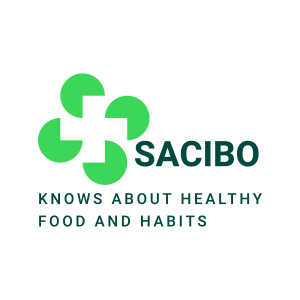
















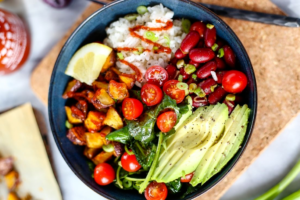






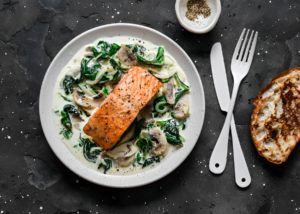






















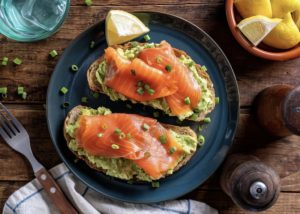



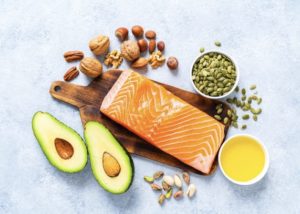












0 Comments